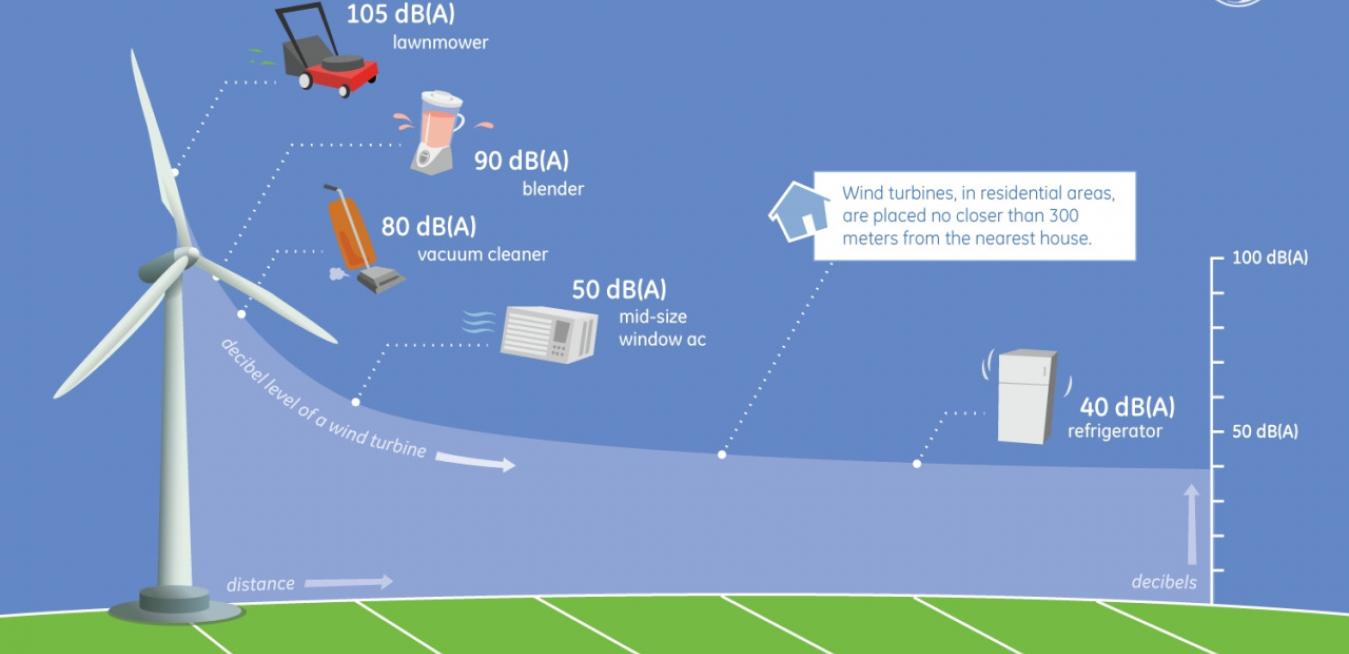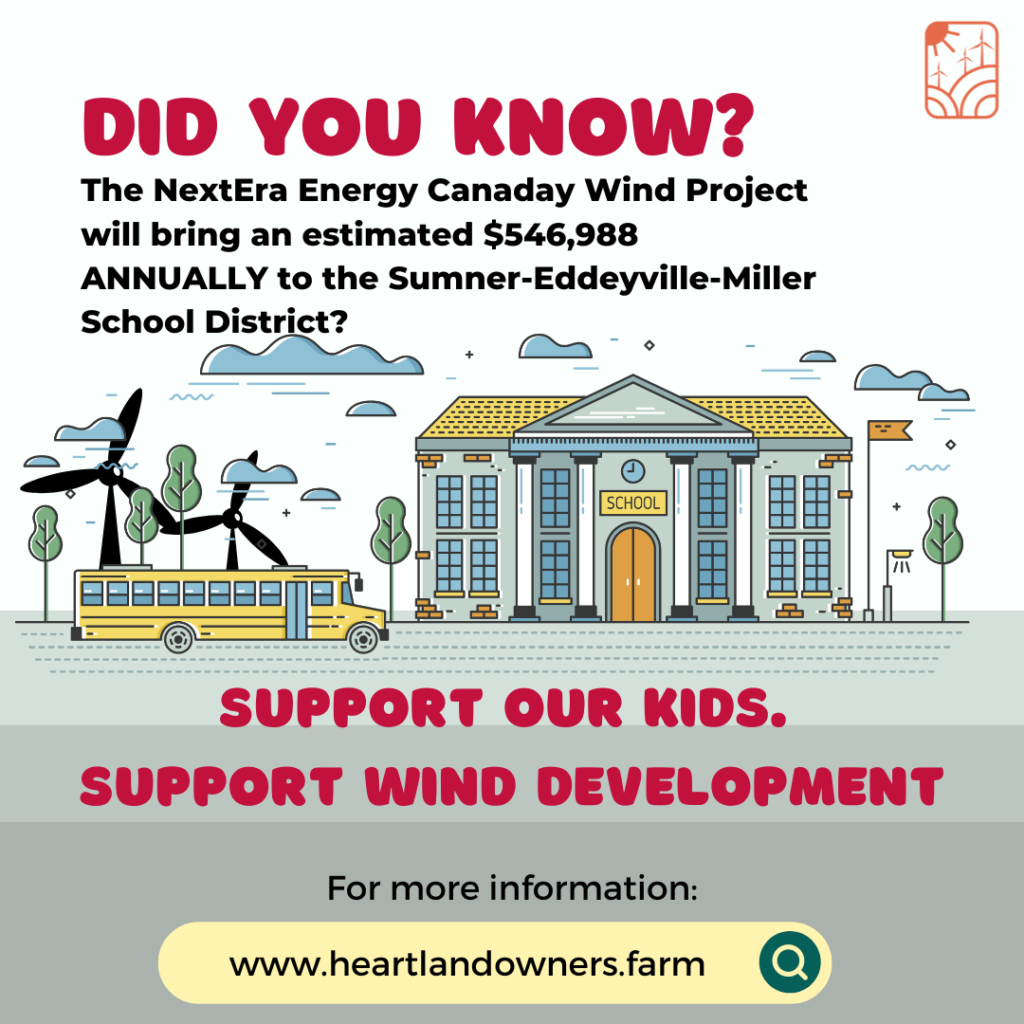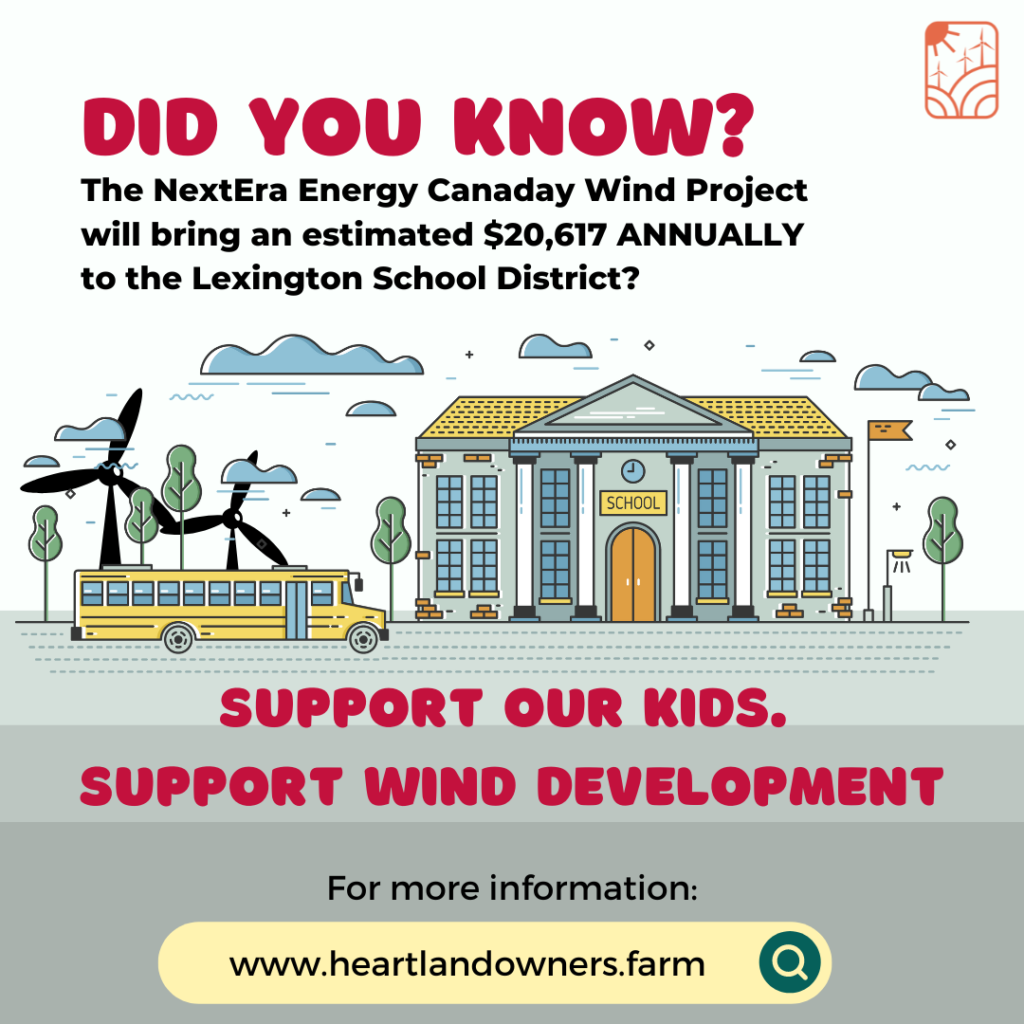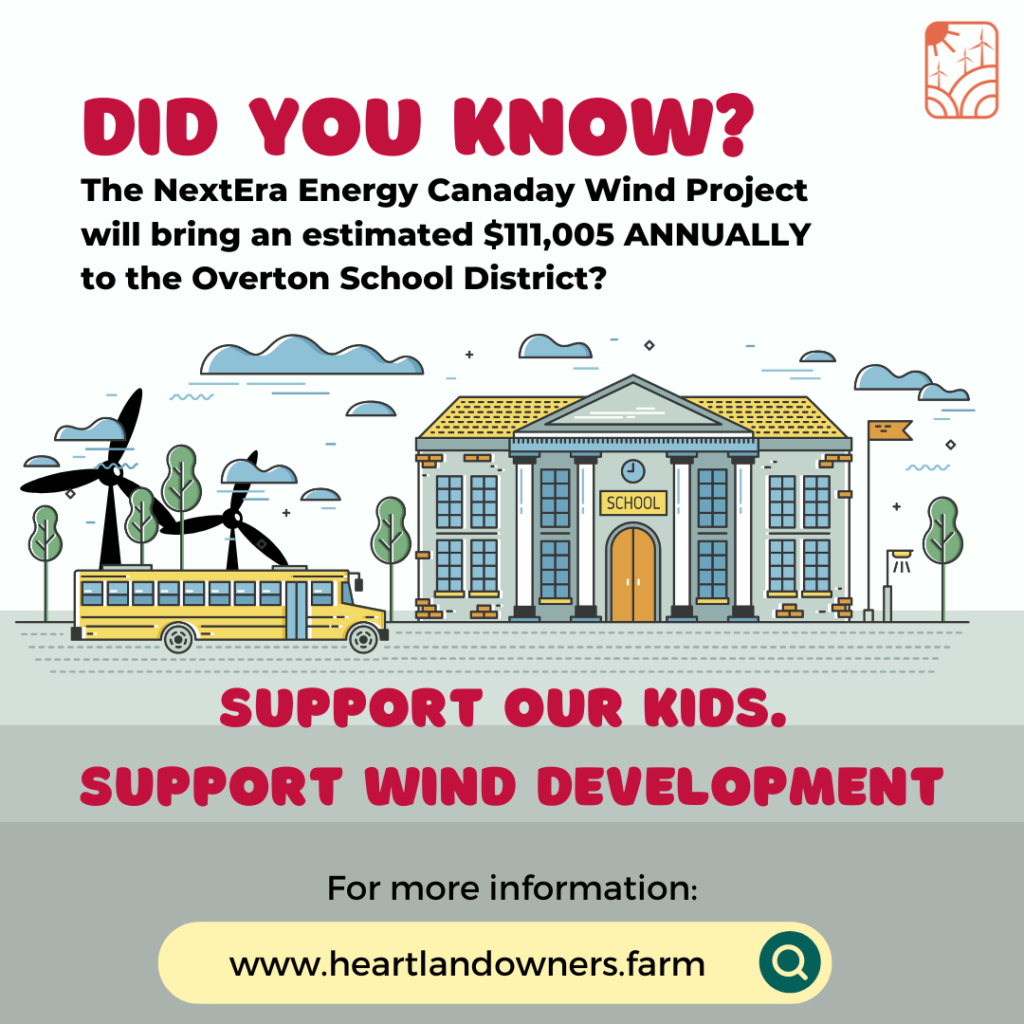Nebraska Wind


AT A GLANCE
Total estimated property tax revenues (based on current levy rates of sample parcels): $1,035,000.
- Total estimated NEW revenue to Dawson County = approximately $221,581 annually.
- Total estimated NEW revenue to School Districts = approximately $678,610 annually
- Sumner-Eddyville-Miller School District: approximately $546,988 annually (~168 MW).
- Overton School District: approximately $111,005 annually (~33 MW).
- Lexington School District: approximately $20,617 annually (~6 MW).
- Total estimated NEW revenue to other entities = approximately $134, 809 annually.
The Canaday Wind Project in Dawson County has an estimated "nameplate" energy-producing capacity of 208 megawatts "MW". Nameplate and Real Property Tax Capacity Tax = $5,000 x 207 megawatts = $1,035,000.
*Actual school districts and nameplate capacity per school district may vary.
Wind Facts
1) Landowners have personal property rights.
My neighbor doesn’t get to tell me what I can or cannot do with my land any more than I get to tell him what animals he can or cannot raise or what crops he can or cannot grow. Allowing folks to start telling people what they’re allowed to farm is a very dangerous and slippery slope.
Renewables and Property Rights
2) Wind energy is good for local property values.
National Association of Realtors: “If Wind Farms Impact Property Values, It Appears to be Positively,” referencing a 2019 study that found the evidence for property value impacts is weak and that “lack of harm” data is robust.
3) Wind energy is good for local communities.
Millions of dollars in local tax revenues and contribution agreements to support county expenses like staff salaries, emergency services, roads and bridges, education investments and more.
Hundreds of construction jobs that bring millions of dollars in local economic activity at local stores, restaurants, and other small businesses.
Improvements to roads and bridges comes with every new project to ensure the equipment is able to be delivered.
Center for Rural Affairs: Wind Energy Yields Tax Revenue
Wind Energy Tax Revenue Fact Sheet
4) Wind energy is safe.
The turbines are controlled and monitored 24/7 for any issues that may come up like excessive wind, ice, or fire. Agreements are made between wind farm operators and emergency responders to effectively manage any emergency situation.
National Library of Medicine - "The available scientific evidence suggests that EMF, shadow flicker, low-frequency noise, and infrasound from wind turbines are not likely to affect human health;"
5) Wind energy is quiet
Turbines have minimum setback standards for sound issues and each turbine must not make any more noise than what is considered roughly a whisper. The coal trains and semi-trucks that roll through most small towns make considerably more noise than this.
Energy.gov - "Most modern wind turbines create sound that is only slightly above the ambient wind noise (6 decibels)"
GRAPHICS FOR USE - SAVE and SHARE on Social Media




Become a HALO member today
Memberships are $300 annually and give members full access to the suite of HALO resources.
Email us at [email protected]
HALO. ALL RIGHTS RESERVED, 2022